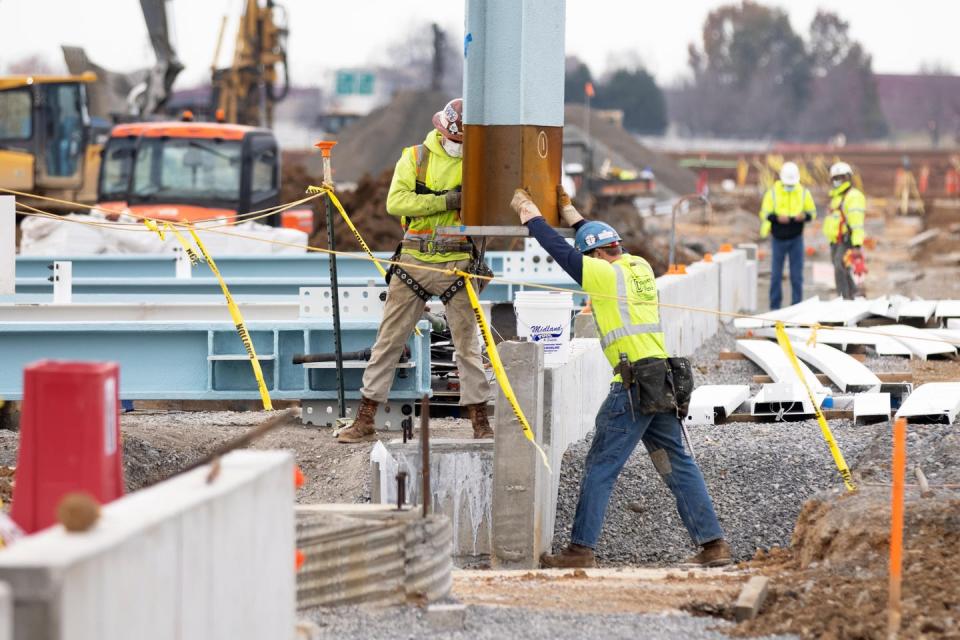Local Sourcing Rule Problematic for Expanded $7500 EV Tax Credit

Tax credits in the Inflation Reduction Act would be available on SUVs, pickup trucks, and vans priced up to $80,000, and on all other body styles, including sedans like the Tesla Model 3, priced up to $55,000.
Battery assembly plants are popping up all over the US (including at Ford's Kansas City plant pictured above), but the new legislation will make it difficult for automakers to meet North American sourcing requirements.
But the industry consensus is that no automakers will be able to meet the tax credit requirements because there will be no lithium processing in North America any time soon.
The Senate on Sunday passed the Inflation Reduction Act, 51-50, with Vice President Kamala Harris breaking the tie. The $739 billion budget reconciliation bill, seen as a victory for the Biden White House and as a weapon in the November midterm elections by Republican candidates, tackles climate change and health care while setting a minimum corporate tax rate of 15%.
The climate change provisions include an extension of the $7500 tax credit that has been available to consumers of electric and electrified vehicles. Under the bill, the tax credit no longer ramps down for an automaker that has sold 200,000 EVs and/or plug-in hybrids. Under the bill, the tax credits are available until 2032, though there is a cap on sticker prices; the tax credit is available on SUVs, pickup trucks, and vans priced up to $80,000, and on all other body styles, including sedans like the Tesla Model 3, priced up to $55,000.
The bill now faces a much easier vote in the House of Representatives, likely this Friday, Aug. 12. The legislation would remove the volume limit while also placing strict minimum requirements on the portion of batteries, battery components, and most importantly, materials that come from North America in eligible vehicles, which must also be assembled in North America.
The Inflation Reduction Act requires that a vehicle “placed in service” before Jan. 1, 2024, must have 50% battery component content made in the US or one of its trade partners to qualify for the $7500 tax credit. That requirement ramps up by 10 points per year, reaching 100% North American components for calendar years 2029-32.
Battery assembly plants are popping up all over the US, so this shouldn’t be an issue, right? Here's the hard part: “Critical Mineral and Battery Component Requirements” that place North American sourcing minimums of 40% on vehicles “placed in service” before 2024 also ramp up 10 percentage points per year, topping out at 80% after Dec. 31, 2026.
As an industry insider notes, these strict provisions were key to securing the bill’s support from Democratic Sen. Joe Manchin III, because his strength among his constituents in West Virginia is his work fighting foreign mining, processing, and manufacturing interests, particularly from China.
China currently leads battery manufacturing capability with more than 75% of global production, according to The Wall Street Journal, and similarly dominates anode, cathode, and battery-cell production. That will change, with General Motors about to announce its fourth battery plant—it has one up and running and two more already announced. Toyota’s North Carolina battery plant is due to open in 2025 with capacity for 800,000 EVs, PHEVs, and hybrids, and the facility has space for another line capable of 400,000 additional units per year.


 Yahoo Autos
Yahoo Autos 